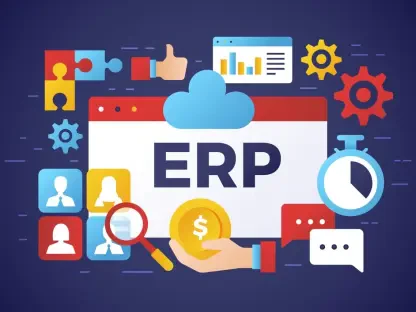Diving into the evolving world of digital advertising and technology, we’re thrilled to sit down with Vijay Raina, a renowned expert in enterprise SaaS technology and software design. With his deep expertise in navigating the complexities of software architecture and thought leadership in tech trends, Vijay offers invaluable insights into some of the most pressing issues facing the industry today. From the murky waters of ad fraud on major platforms like Meta to the transformative impact of AI on SaaS pricing and agency dynamics, this conversation unpacks how these forces are reshaping business models, customer relationships, and content creation in the digital space.
How did Meta’s recent earnings report shed light on the issue of fraudulent ads contributing to their revenue stream?
Meta’s Q3 earnings report brought some uncomfortable truths to the surface. They disclosed an expectation that roughly 10% of their annual revenue could be tied to fraudulent ads. This isn’t just a small glitch; it’s a significant chunk of income potentially derived from deceptive practices. It raises questions about the integrity of their ad ecosystem and how much they’ve relied on revenue that might not align with ethical standards.
What’s your take on Meta’s estimate of 10% of revenue from fraudulent ads being described as ‘rough and overly-inclusive’ by their spokesperson?
I think the spokesperson’s comment about the estimate being ‘rough and overly-inclusive’ is an attempt to downplay the severity of the issue. Estimating something like ad fraud isn’t an exact science, but pegging it at 10% suggests internal data or models pointed to a notable problem. Calling it overly-inclusive might be a way to soften the blow, implying not all of that revenue is definitively fraudulent, but it still highlights a gap in their ability to fully control or quantify the issue.
Can you elaborate on the kinds of fraudulent ads that have been flagged on Meta’s platform over the past few years?
Over the last three years, Meta’s platform has reportedly been a breeding ground for ads promoting financial scams like dubious investment schemes, illegal online casinos, and even the sale of banned medical products. These aren’t just minor infractions; they’re serious deceptions that can harm users financially and physically. It’s a stark reminder of how platforms can become conduits for bad actors if oversight isn’t tight enough.
How does Meta’s ad system determine whether an ad is fraudulent, and what do you think about their high threshold for flagging scams?
Meta’s ad system relies on automated detection to flag potential scams, but it only labels an ad as fraudulent if the confidence level exceeds 95%. That’s an incredibly high bar, which means a lot of questionable ads slip through the cracks. While a high threshold might reduce false positives, it also prioritizes platform revenue over user safety. From a tech perspective, balancing precision and recall in detection algorithms is tough, but this seems overly cautious to the detriment of trust.
Why do you believe Meta charges higher rates to advertisers they suspect of running scams, and what does this mean for legitimate advertisers?
Charging higher rates to suspected scammers is a curious strategy. On one hand, it could be seen as a deterrent or a way to offset potential losses from fraud. On the other, it almost looks like profiting off bad behavior, which is problematic. For legitimate advertisers, this creates an uneven playing field. They’re essentially subsidizing a system that tolerates fraud, and it erodes trust in the platform’s fairness and commitment to a clean ad environment.
What challenges do advertisers face with ad fraud and technical glitches on major platforms, and how do these issues seem to benefit the platforms themselves?
Advertisers on platforms like Meta and others have long grappled with ad fraud, bugs, and glitches that inflate costs or skew performance metrics. Fake clicks, bot traffic, or system errors can drain budgets without delivering real value. Interestingly, these issues often benefit the platforms financially because they still collect revenue for impressions or clicks, even if they’re fraudulent or glitch-driven. It’s a perverse incentive structure that’s hard to dismantle without stronger accountability mechanisms.
When platforms issue refunds for ad-related problems, why do they often opt for ad credits over cash, and how does this impact advertisers?
Issuing ad credits instead of cash refunds is a strategic move by platforms. It keeps the money within their ecosystem, ensuring advertisers reinvest in more ad spend rather than pulling funds out. For advertisers, this can be frustrating because it limits their flexibility. If they’ve lost trust in the platform due to fraud or errors, being locked into more ad spend with credits might feel like a forced commitment rather than a fair resolution.
How has the surge in AI technology created tension between SaaS companies and their customers?
AI’s rapid growth has put SaaS companies in a bind. Customers are increasingly frustrated with what they see as ‘sticky’ vendor relationships—high costs and rigid contracts. At the same time, AI empowers customers to bypass traditional SaaS tools by building custom solutions with platforms like OpenAI. This shift challenges SaaS providers to rethink their value proposition, as they’re no longer the only game in town for software solutions.
In what ways are brands leveraging AI to reduce reliance on traditional SaaS vendors?
Brands are getting creative with AI, using subscriptions to platforms like OpenAI to develop tailored tools. For instance, they might prompt AI to build a customer review system for an e-commerce platform like Shopify. This DIY approach cuts out the middleman—traditional SaaS vendors—and saves costs while giving brands more control over customization. It’s a game-changer for how businesses approach software needs.
What’s the emerging trend of AI tools negotiating SaaS subscription prices, and how do they pull this off?
There’s a fascinating trend where AI tools are being used to haggle down SaaS subscription costs. These tools scan contracts, renewal terms, and external data to spot opportunities for savings. Then, they draft emails that appear to come from a company’s procurement team to negotiate lower rates. It’s a clever use of automation to tackle pricing opacity, and it’s putting pressure on SaaS providers to be more competitive.
How could AI-driven negotiation strategies expand beyond SaaS to other subscription services?
AI’s negotiation tactics could easily spill over into other subscription areas like news, entertainment, or shopping memberships. These services often dangle discounts at the last second when a user tries to unsubscribe. AI tools could scale this behavior, timing unsubscribe attempts to snag those deals across multiple subscriptions. It’s a savvy way to game the system, turning customer retention tactics back on the providers.
Why is AI often hailed as a democratizing force in tech, particularly for advertisers?
AI is seen as a great equalizer because it levels the playing field, especially for advertisers. It enables them to produce high-quality content faster and cheaper than ever before. Smaller players or those with tight budgets can now compete with bigger brands by leveraging generative AI for ads, copy, or visuals. It’s breaking down barriers that once made top-tier marketing a privilege of the well-funded.
Who do you see as the primary losers in this AI-driven transformation, and why are they struggling?
The biggest losers right now are traditional SaaS providers and advertising agencies. SaaS companies are under threat because AI lets customers build alternatives or negotiate better deals, eroding their pricing power. Agencies, meanwhile, face pressure as clients use AI to handle content creation in-house, reducing the need for outsourced services. Both are scrambling to adapt to a landscape where AI shifts control to the end user.
Despite concerns about AI disrupting agencies, why do some agency leaders remain optimistic about their future?
Some agency leaders, particularly at larger firms, aren’t sweating the AI wave because they see it as an opportunity. They’re investing heavily in AI to streamline operations and offer new services. Plus, while AI cuts ad production costs, clients are demanding more content overall, which keeps revenue steady. Agencies are also pivoting to self-serve platforms for smaller brands, showing they’re willing to evolve rather than resist the change.
What is your forecast for the future of AI’s impact on SaaS and advertising ecosystems?
I believe AI will continue to disrupt both SaaS and advertising in profound ways over the next few years. For SaaS, we’ll likely see a bifurcation—some providers will pivot to integrate AI as a core offering, while others may struggle to retain customers who opt for bespoke solutions. In advertising, AI will further democratize content creation, but it could also intensify issues like ad fraud if detection systems don’t keep pace. The challenge for platforms, agencies, and vendors will be to harness AI’s benefits while maintaining trust and transparency with users and clients. It’s going to be a fascinating, if turbulent, ride.









